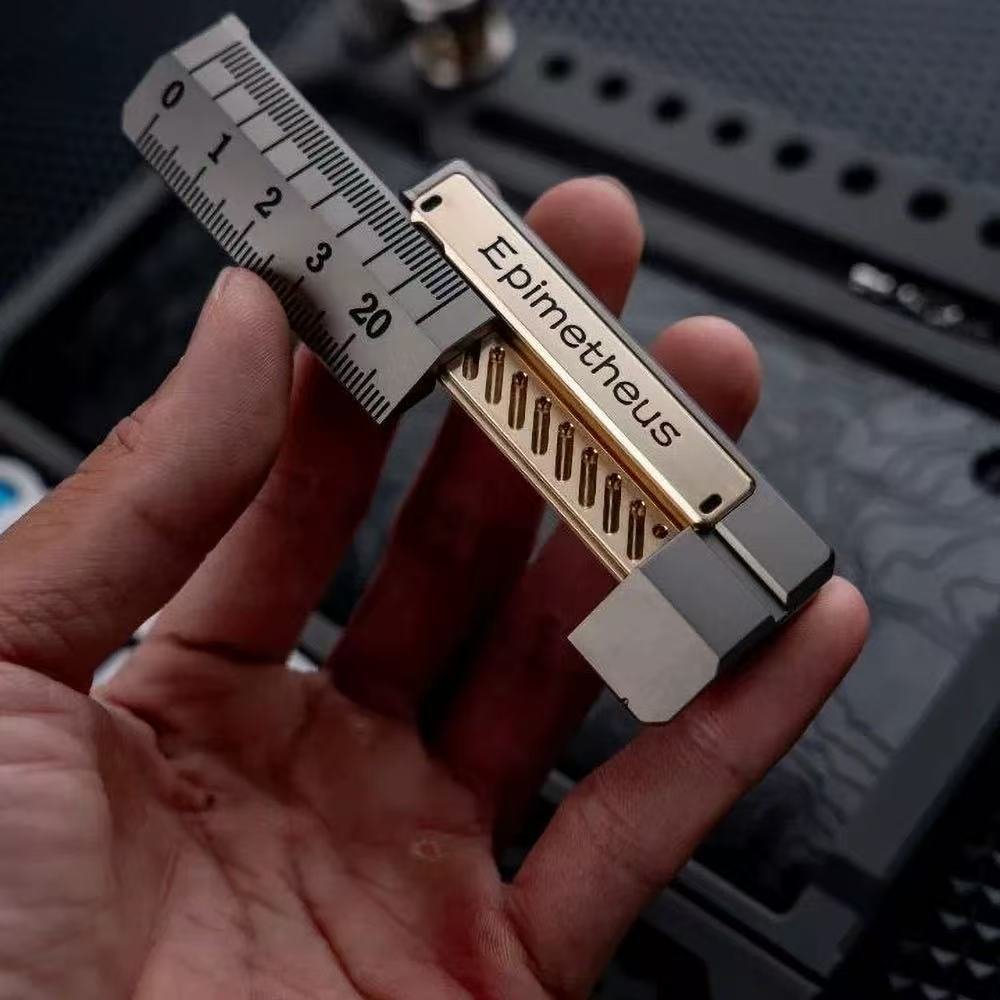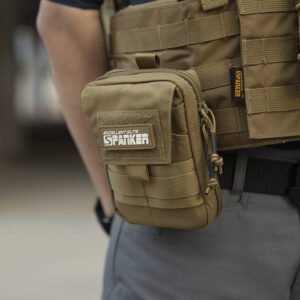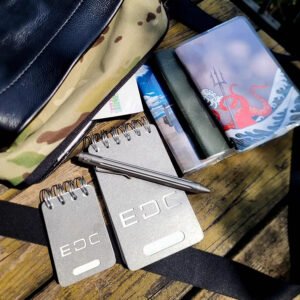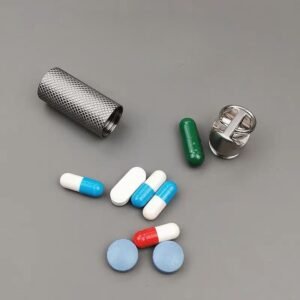In today’s fast-paced world, fidgets like spinners and sliders have evolved from simple toys to sophisticated stress-relief tools and even stylish everyday carry (EDC) items. This blog explores how these clever devices help manage stress through tactile interaction, their mainstream design elements, and why they’ve become essential desk companions for many.
The Science Behind Fidgets and Stress Relief
Fidget spinners and sliders don’t magically eliminate stress, but they provide valuable psychological benefits through several mechanisms:
Attention Diversion Mechanism
When anxious, your mind tends to fixate on negative thoughts in a self-perpetuating cycle. The rhythmic motion of spinning a fidget spinner or sliding a fidget slider breaks this pattern by giving your brain something neutral to focus on. As psychologists have noted, this distraction effect provides temporary relief from anxiety. The continuous movement creates a focal point that draws attention away from stressful thoughts.
Tactile Grounding Effect

The physical sensation of manipulating these gadgets provides sensory feedback that grounds users in the present moment. This is particularly helpful for people who experience restlessness or nervous energy. The satisfying “click” of a fidget slider or the smooth rotation of a spinner offers immediate sensory input that can be calming.
Rhythmic Motion Therapy
The repetitive motions involved in using these tools—whether spinning, flipping, or sliding—can induce a mildly meditative state. The predictable patterns and consistent tactile feedback create a rhythm that many find soothing, similar to other repetitive stress-relief activities like knitting or using worry stones.
Motor Channeling Benefit
For people who naturally fidget (like leg bouncing or pen clicking), these gadgets provide a socially acceptable outlet for that nervous energy. By channeling restless movements into a controlled, contained activity, they help reduce disruptive fidgeting while still allowing the user to expend that energy.
Popular Design Elements of Premium Fidgets
Modern fidget tools have evolved far beyond the basic plastic spinners. Today’s high-end models incorporate sophisticated design elements that enhance both function and aesthetic appeal:
Precision Tactile Feedback Systems
- Magnetic Detent Systems: Premium sliders use carefully calibrated magnets to create satisfying “click” positions with just the right amount of resistance
- Bearing Quality: High-grade ceramic or hybrid bearings in spinners ensure smooth, long spins with minimal wobble
- Texture Variations: Many designs incorporate multiple surface finishes (brushed, polished, sandblasted) in a single device for varied tactile experiences
Rhythmic Motion Engineering
- Weight Distribution: Strategically placed weight in spinners creates harmonic balance for smoother rotation
- Kinetic Damping: Some advanced models incorporate subtle damping systems to create the perfect amount of resistance in movements
- Dynamic Tension Adjustment: Certain sliders allow users to modify magnetic strength to customize the sliding resistance
Trendy Aesthetic Features
- Tritium Slot Designs: Night-visible tritium vials set in precision-machined slots add both functionality and futuristic flair
- Skeleton Frames: Openwork designs reduce weight while showcasing internal mechanisms
- Custom Anodization: Vibrant colored finishes via electrochemical coloring processes
- Modular Components: Interchangeable parts let users customize the look and feel
Premium Material Selection
- Aerospace Aluminum: Lightweight yet durable 6061 or 7075 aluminum alloys
- Titanium Constructions: High-end models use Grade 2 or Grade 5 titanium for strength and corrosion resistance
- Copper and Brass: These metals offer pleasing heft and develop natural patinas over time
- Exotic Composites: Some incorporate carbon fiber, zirconium, or tungsten for unique properties
The Evolution from Toy to EDC Multi-Tool
What began as simple stress-relief toys has evolved into sophisticated EDC items that blend function with artistry:
Multi-Function Designs
Many modern fidget tools incorporate additional practical features:
- Bottle openers built into slider frames
- Hex wrench cutouts in spinner bodies
- Integrated pry bars or nail nicks
- Hidden storage compartments in larger models
Office-Friendly Refinement

Designers have created versions appropriate for professional environments:
- Quieter operation (muted clicks, silent bearings)
- Discreet sizes that fit comfortably in a palm
- Sophisticated finishes that look executive rather than toy-like
Collector-grade Craftsmanship
The high-end market features:
- Limited edition numbered series
- Hand-finished pieces with artisan-level detail
- Collaborative designs between machinists and artists
- Custom engraving options
Therapeutic Applications
While not medical devices, these tools see use in:
- Occupational therapy settings
- Smoking cessation programs
- Classroom focus aids (where permitted) 4
- Public speaking preparation
Choosing the Right Fidgets for Your Needs
With countless options available, consider these factors when selecting a fidget tool:
For Stress Relief:
- Smooth, continuous motions (spinners)
- Medium resistance for satisfying movement
- Comfortable size for prolonged use
For Focus Enhancement:
- Tactile feedback with clear actuation points (sliders)
- Moderate complexity to engage but not distract
- Neutral colors that don’t visually distract
For Sensory Satisfaction:
- Multiple texture surfaces
- Adjustable tension systems
- Quality materials with pleasing heft
For EDC Practicality:
- Compact size that fits in pockets
- Additional tool functions
- Durable construction
The Future of the Fidgets
As the market matures, we’re seeing several emerging trends:
Smart Fidget Integration
Some new models incorporate:
- Bluetooth connectivity to track usage patterns
- Haptic feedback customization via app
- Motion sensors that interact with digital devices
Sustainable Materials
Eco-conscious designs featuring:
- Recycled metals
- Biodegradable composites
- Renewable material sources
Ergonomic Innovations
Human factors improvements include:
- Contoured shapes for reduced hand fatigue
- Adaptive resistance that changes with use intensity
- Multi-purpose designs
Artistic Collaborations
Crossovers with:
- Industrial designers
- Sculptors
- Graphic artists
- Luxury brands
From their humble beginnings as simple spinning toys to today’s precision-engineered stress management tools, fidgets have proven their staying power. Whether you prefer the hypnotic spin of a well-balanced rotor or the satisfying click of a magnetic slider, these tools offer a tangible way to manage daily stress while expressing personal style.
As designs continue to evolve, one thing remains constant—the human need for tactile, rhythmic interaction as a counterbalance to our increasingly digital world.
For those interested in exploring further, many talented machinists and designers share their latest creations on EDC forums and specialty retailer sites, where the fusion of function and artistry continues to push boundaries.










